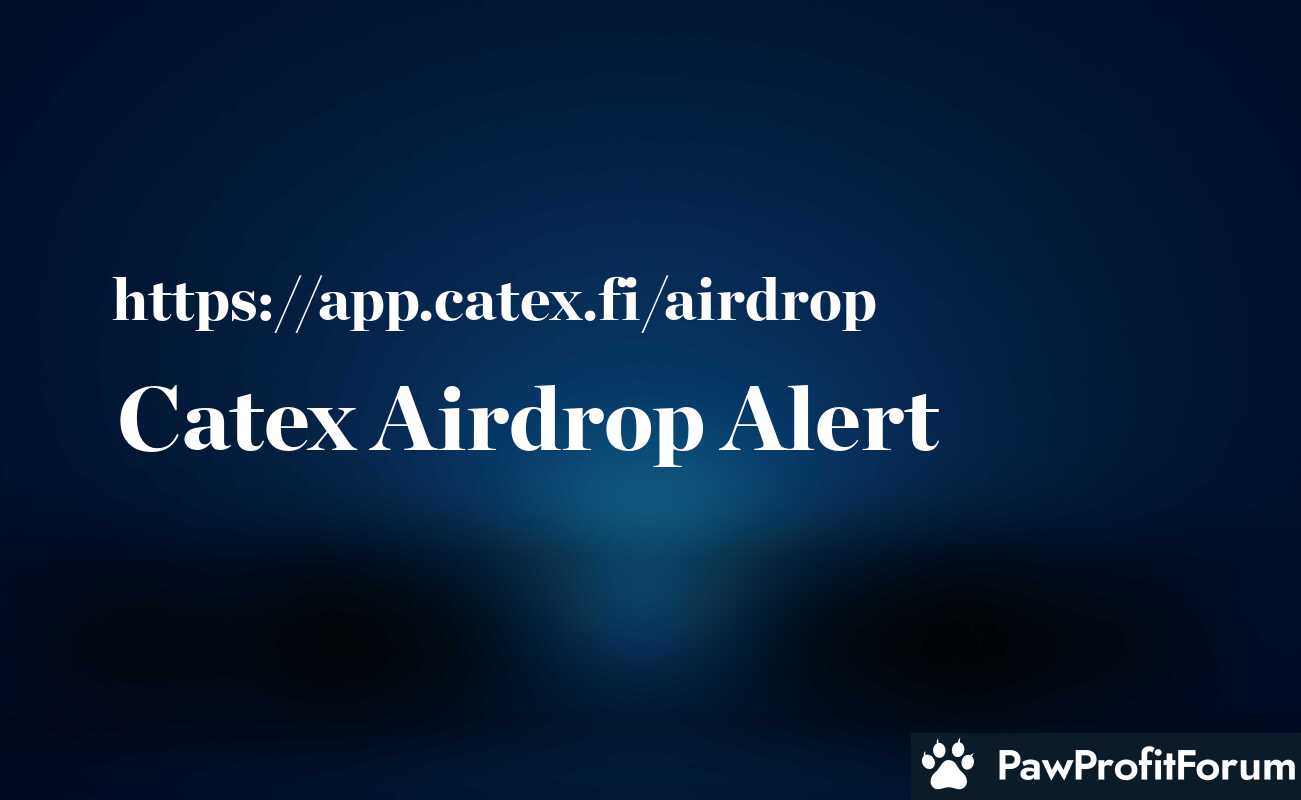What is Catex?
Catex is a decentralized exchange (DEX) operating as a “MetaDEX” built on top of
Uniswap v4 within the
Unichain blockchain ecosystem. The platform serves as the primary DeFi engine for
Unichain, offering a secure, automated, and capital-efficient marketplace for liquidity providers and traders. The protocol implements Automated Liquidity Management (ALM) to simplify liquidity provision for users while utilizing a ve(3,3) governance model similar to protocols like Curve and Thena. This tokenomics structure aligns incentives by distributing trading fees and voting incentives to veCATX token holders. Catex also leverages
Uniswap v4’s programmable extensions called Hooks, which allow developers to deploy custom strategies directly into the automated market maker (AMM) logic. As the third launch from the DefiZoo MetaDEX franchise, following Lynex on Linea and Ocelex on Zircuit, Catex benefits from proven infrastructure and development experience. The platform acts as a coordination layer that unites liquidity providers, hook builders, protocols, and users to create an efficient liquidity ecosystem on
Unichain.
Catex Airdrop Details
Catex has
allocated 3,000,000 veCATX tokens specifically for “future community onboarding”. The platform launched its CATX token on July 15, 2025, following a successful IDO that raised $50,000 with tokens priced at $0.10 each. The current airdrop targets early
Unichain users who hold 34 or more UNI tokens on the network and users who have been providing liquidity to UNI pools on
Unichain. Additional airdrop opportunities may become available for active platform users who engage with Catex’s trading and liquidity provision features. The platform emphasizes community participation through its ve(3,3) governance model, where veCATX holders earn 100% of trading fees and voting incentives.
Step-by-Step Guide: How to Participate in Catex Airdrop
- Acquire ETH: Purchase ETH from Binance to cover transaction fees and initial capital for bridging to Unichain.
- Bridge to Unichain: Use Rhino bridge to transfer your ETH and other assets from Ethereum mainnet to Unichain.
- Connect Wallet: Visit the Catex platform at app.catex.fi and connect your Web3 wallet (MetaMask, WalletConnect compatible wallets).
- Check Current Airdrop Eligibility: Navigate to the airdrop page to check if you qualify for the current distribution (requires 34+ UNI tokens on Unichain or previous UNI pool liquidity provision).
- Claim Available Tokens: If eligible, follow the on-screen instructions to claim your allocated veCATX tokens from the current airdrop.
- Start Trading: Begin swapping between different tokens on Catex regularly to build trading volume and platform engagement.
- Provide Liquidity: Add liquidity to available trading pools on the platform to earn fees and demonstrate active participation.
- Stake LP Tokens: Visit the Pre-mining page and stake your LP tokens to earn EarlyCATX rewards, which convert to a mix of oCATX and veCATX at token generation events.
- Maintain Activity: Continue regular trading and liquidity provision to potentially qualify for future airdrop distributions from the community allocation.
- Follow Updates: Stay connected with Catex on X (Twitter) for announcements about additional airdrop opportunities and platform developments.
Tips for Maximizing Airdrop Rewards
Focus on consistent platform engagement rather than one-time large transactions. Regular trading activity across different token pairs demonstrates genuine platform usage and may improve future airdrop eligibility. When providing liquidity, consider pools with higher trading volume as they generate more fees and platform engagement metrics. Understanding the different token types is crucial for maximizing rewards. EarlyCATX earned through pre-mining converts to both oCATX and veCATX tokens, with veCATX providing governance rights and fee-sharing benefits. The platform’s documentation explains these token mechanics in detail, helping users make informed decisions about staking and governance participation. Timing liquidity provision with platform milestones and updates can potentially increase reward multipliers. The ve(3,3) model rewards long-term commitment, so users willing to lock tokens for extended periods typically receive better returns through both airdrops and fee distributions.
Understanding Catex Token Types
CATX vs veCATX vs oCATX
The Catex ecosystem uses multiple token types with different utilities and reward mechanisms. CATX serves as the primary governance and utility token, tradeable on the platform since July 15, 2025. Users can lock CATX tokens to receive veCATX, which provides voting rights and entitles holders to 100% of platform trading fees. oCATX represents option tokens that can be exercised to acquire CATX at predetermined prices, offering users exposure to token price appreciation with lower upfront capital requirements. EarlyCATX tokens earned through pre-mining activities convert to combinations of oCATX and veCATX, providing flexibility for users to choose between immediate liquidity and long-term governance participation. The vesting structure for different acquisition methods varies significantly. IDO participants received 25% of tokens unlocked immediately with 75% locked as veCATX over 6, 12, and 24-month periods. Users who chose maximum locking received 25% bonus tokens, demonstrating the platform’s preference for long-term commitment.
Pre-Mining and Staking Strategies
Liquidity Provision Rewards
Catex offers pre-mining opportunities with high APRs to attract early liquidity providers before full platform launch. Users can stake LP tokens from various pools to earn EarlyCATX rewards, which provide exposure to future token distributions and governance rights. The platform prioritizes UNI-based trading pairs due to its integration with
Uniswap v4 infrastructure. Providing liquidity to these pools often results in higher reward rates and better positioning for future airdrops. The automated liquidity management system helps optimize returns while reducing impermanent loss risks for liquidity providers. Staking strategies should consider both short-term reward rates and long-term platform growth potential. Early participants in pre-mining activities typically receive better conversion rates when EarlyCATX tokens convert to the final token structure, making early engagement particularly valuable.
Governance and Fee Distribution
ve(3,3) Model Benefits
Catex implements a ve(3,3) governance model that creates sustainable incentives for long-term token holders. veCATX holders receive 100% of platform trading fees distributed proportionally based on their locked token amounts and durations. This model encourages users to maintain long-term positions rather than short-term speculation. Voting power in governance decisions correlates directly with veCATX holdings, allowing committed community members to influence platform development, fee structures, and partnership decisions. The system also includes voting incentives that provide additional rewards for participating in governance proposals and platform direction decisions. The fee distribution mechanism operates automatically, with trading fees collected from all platform transactions distributed weekly to veCATX holders. Higher trading volumes result in larger fee distributions, creating aligned incentives between platform growth and token holder rewards.
Frequently Asked Questions
How much UNI do I need for the current airdrop?
You need to hold at least 34 UNI tokens on
Unichain or have previously provided liquidity to UNI pools on the network to qualify for the current airdrop distribution.
When will future airdrops be distributed?
Catex has not announced specific dates for future airdrop distributions from the 3,000,000 veCATX community allocation. Follow their official X account for the latest announcements and eligibility updates.
Can I participate without holding UNI tokens?
Yes, you can build eligibility for future airdrops by actively trading on the platform and providing liquidity to available pools, even if you don’t qualify for the current UNI-based distribution.
What’s the difference between claiming standard vs max-lock tokens?
Standard claiming provides 25% tokens unlocked immediately with 75% locked as veCATX over various periods. Max-lock provides 100% locked tokens but includes a 25% bonus, resulting in more total tokens for users willing to commit long-term.
How often are trading fees distributed to veCATX holders?
Trading fees are distributed weekly to veCATX holders based on their proportional share of locked tokens and lock duration.
Conclusion
Catex represents a significant development in the
Unichain DeFi ecosystem, offering multiple opportunities for users to earn tokens through airdrops, trading, and liquidity provision. The platform’s integration with Uniswap v4 and implementation of proven tokenomics models create a foundation for sustainable growth and user rewards. Success in farming Catex airdrops requires consistent platform engagement, understanding of the token mechanics, and willingness to participate in the governance ecosystem. Users who begin participating early, maintain regular activity, and commit to long-term platform growth typically receive the best rewards through both direct airdrops and fee-sharing mechanisms. The 3,000,000 veCATX community allocation suggests ongoing opportunities for engaged users to benefit from platform growth and adoption. You're interested in more projects that do not have any token yet and could potentially airdrop a governance token to early users in the future? Then check out our
list of potential retroactive airdrops to not miss out on the next DeFi airdrop!
 Airdrop confirmed
Airdrop confirmed
PawProfitForum does not endorse communities that promise unrealistic returns through potentially unethical practices. We are committed to promoting safe, informed, and ethical participation in the cryptocurrency space. We urge our audience to remain cautious, perform thorough research, and consider the broader implications of their investment decisions. All the above reviews include unverified information. Please conduct your own research. Share your feedback Airdrop confirmed
Airdrop confirmed













